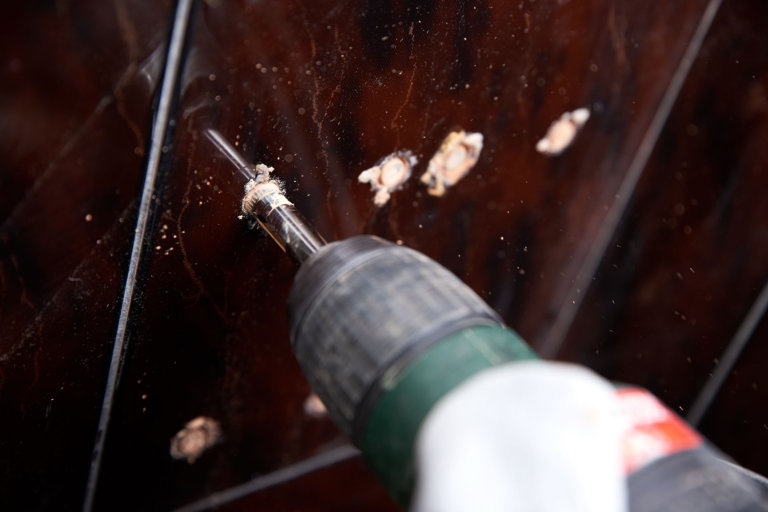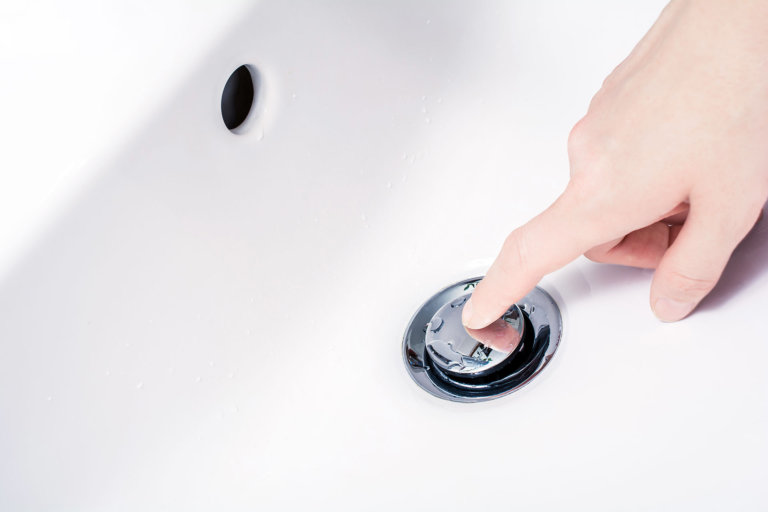One of the many small irritations in life is stepping into the shower only for your foot to make contact with chillingly cold water. Great! Your shower drain is so blocked up that the water cannot drain out.
After you grab something to bail out the standing water, you need to get rid of that clog. The good news is that there are many simple approaches to solving this problem.
Here are 10 practical ways to unclog your drain and let you continue using it without issue.
Method 1: Manually Pull It Out
If you can actually see the reason for the clog, such as a large piece of soap or a clump of matted hair, simply reach down with your fingers and pull it out.
The blockage may be just beyond the reach of your fingers, possibly because it’s too deep beneath the drain. In this case, you can try to remove the drain cover. If that’s not possible, fashion a simple hook from a reshaped clothes hanger or some other object that is long, narrow and flexible. You can then use the tool to either bring the obstruction within pulling range with your fingers or simply run the tool through the blockage itself and pull it straight out.
Method 2: Boiling Water
Simply boil some water in a pan or pot and pour it down the drain. You can use a funnel to keep the water from affecting any other parts of your bathroom. This method works great with clogs involving grease or oil from chunks of soap that make their way down into the pipes.
Note that this method may be insufficient for serious clogs caused by clustered hair strands or that have had a long time to settle into place. That being said, this method can help loosen up your clog as you try other approaches.
Method 3: Use a Plunger
Plungers work by manipulating air and liquids to create enough of a difference in pressure to unblock clogs. The vigorous action of plunging will either bring your nemesis to the surface or dislodge it and free up the flow of water.
For best results, line your plunger with some petroleum jelly first. Make sure to run enough water into the tub that your plunger head will be fully submerged. Once everything is in place, vigorously tug the plunger up and down for a while.
If you notice no difference in sound after 5 minutes, give the situation another look and see if the problem is solved or requires another approach.
Method 4: Baking Soda and Vinegar
This method works great for people who are hesitant to use powerful chemicals for the job because of fears over damaging the plumbing.
Simply pour one cup of baking soda down your drain and give it a few minutes to settle on top of the clog. Follow up the baking soda with one cup of vinegar and give the resulting chemical reaction several hours to do its job and dissolve the clog.
Finish this approach by pouring a container of boiling water down the drain to wash away the chemical residue as well as the clog.
Method 5: Use a Plumbers’ Snake
Despite being a professional’s tool, a snake (also known as a drain auger) is very easy to work. Run it down through your plumbing until you meet some resistance from the clog. Then turn the handle and retract the snake back to you.
While you may think that that was all you had to do, make sure to run some water down the drain to test your hypothesis. If all goes well, your water will run just fine without backing up on you.
Most clogs seldom call for the power of a snake. The one type of clog that cannot be overcome with just a snake would be advanced situations in rural areas where you discover a tree’s roots are to blame.
Method 6: Use a Cleaning Enzyme
Enzymes are a biological means of chemically dealing with problems like those common to a clogged shower drain. Enzymes will chemically react with whatever might block your drain’s water, digesting or otherwise dissolving the problem for good.
The only thing you need to do when resorting to a cleaning enzyme is to follow the directions on the container. This will involve gauging how much to use and pouring that amount down your drain.
Cleaning enzymes tend to be sold in jugs, much like any other form of cleaning supplies. The cost of a jug of cleaning enzymes ranges from around $9 to $45, depending on the particular brand.
Method 7: Use Chemicals From a Hardware Store
Most general stores and hardware supply stores sell several varieties of drain-clearing chemicals that can be quite powerful. They are also relatively affordable, falling in the price range of $6-$13.
Note that this power also makes them quite hazardous, so never let them find their way into your mouth and always handle them with goggles and gloves. Lastly, never mix your chemicals.
As for their actual use, simply follow whatever directions are printed on the side of the container. If all goes well, your clog should be a thing of the past. However, if things do not go as planned and the clog remains, don’t mix in any other chemicals. It’s time to try another one of these methods.
Method 8: Use Caustic Soda (Sodium Hydroxide)
The first thing you should know about caustic soda is that it is potent but also dangerous. Gloves and goggles should be used at all times when handling caustic soda; anything caustic can cause chemical burns on your skin.
Add three cups of soda to 3/4 of a gallon (3 liters) of cold water, stirring the mixture together with something wooden. Once the caustic soda has “activated” by heating up and blending into the cold water, unleash it on your drain. Wait somewhere between 20 and 30 minutes and then pour boiling water down the drain. This should not only confirm that the drain was cleared but also wash away any soda that lingers along your pipes.
Method 9: Use a Wet/Dry Shop Vacuum
A shop vacuum is a specialty vacuum used for cleaning up debris in an industrial setting. Place the mouth of the hose down your drain and set the device to interact with wet materials. The hose will then go to town, sucking up all of your backed up water, and hopefully freeing the clog from your pipes.
Some models of shop vacuum also feature a see-through canister, allowing you to see whatever was causing your clog in the first place. It is important to remember that this is a very different device from a regular vacuum. This method should only be performed with the former. These sorts of vacuums can range in price from $25 to several hundred dollars.
Method 10: Pull Out Your Phone and Dial a Plumber
While this method is certainly easy, it can also be the most expensive solution for a clogged shower drain. You are leaving the task to someone who earns a living for their knowledge of plumbing issues and the equipment necessary for every job.
When looking to hire a plumber, make sure to do some research beforehand. Look at review sites for companies and also for independent plumbers who operate by themselves. If you are going to pay someone else to tackle your problem, you should spend your money as wisely as possible.
Preventing Shower Clogs
A shower clog happens when there is a blockage. This can come from a single object or from a cluster of substances that managed to collect beneath the drain and join together over time. Either way, a clog will leave you stuck with an unacceptable amount of water drainage. When water does not properly drain, it not only makes it more challenging to shower but also runs the risk of flooding your bathroom.
The good news is that there are several things you can do to prevent clogs from forming in the future.
One of the simplest things you can do is purchase a drain protector. This sits over the drain and snags things that might clog the drain, such as hair.
Another trick is to invest in a stable soap dish. Soap can lead to drain clogs by serving as the nexus for a clump of hair strands. Keeping your soap in a dedicated holding area means that there is less risk of it landing near the drain and possibly chipping off down into the drain.







